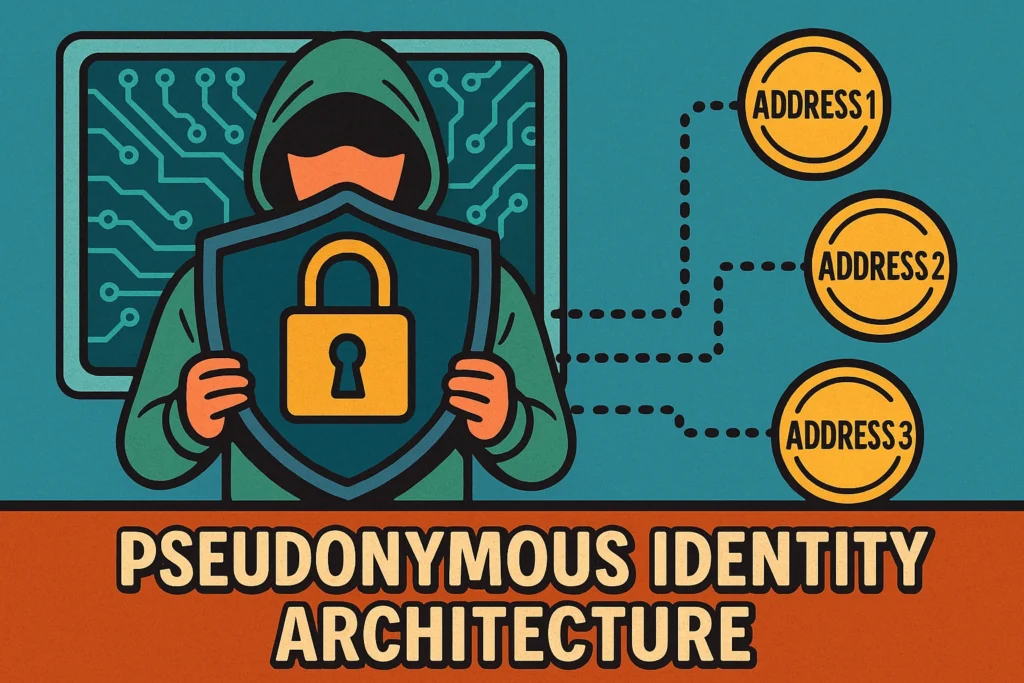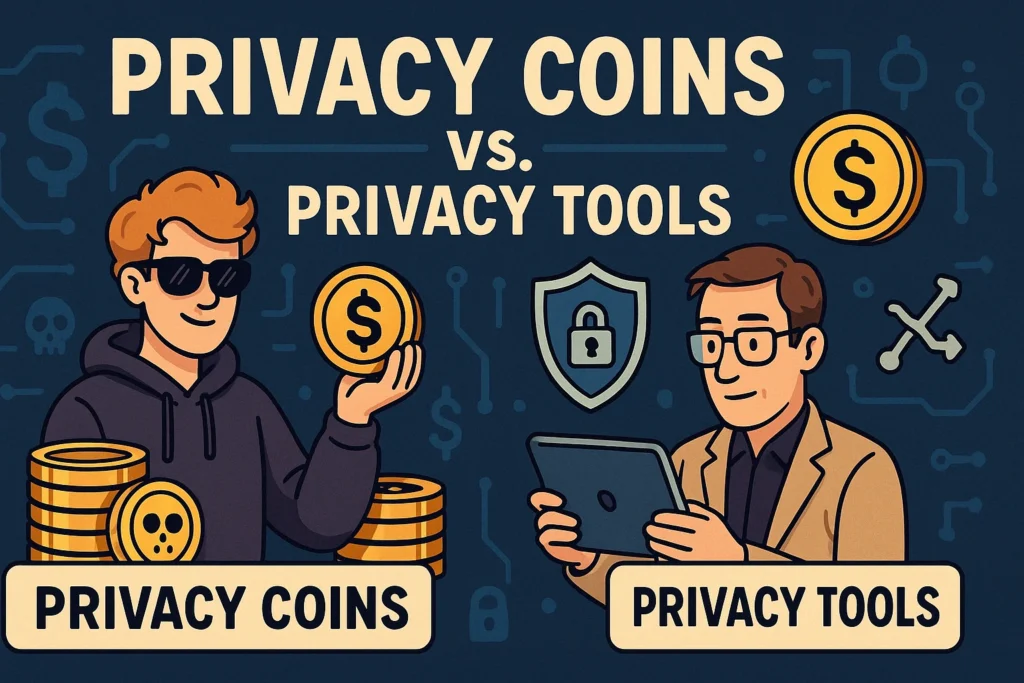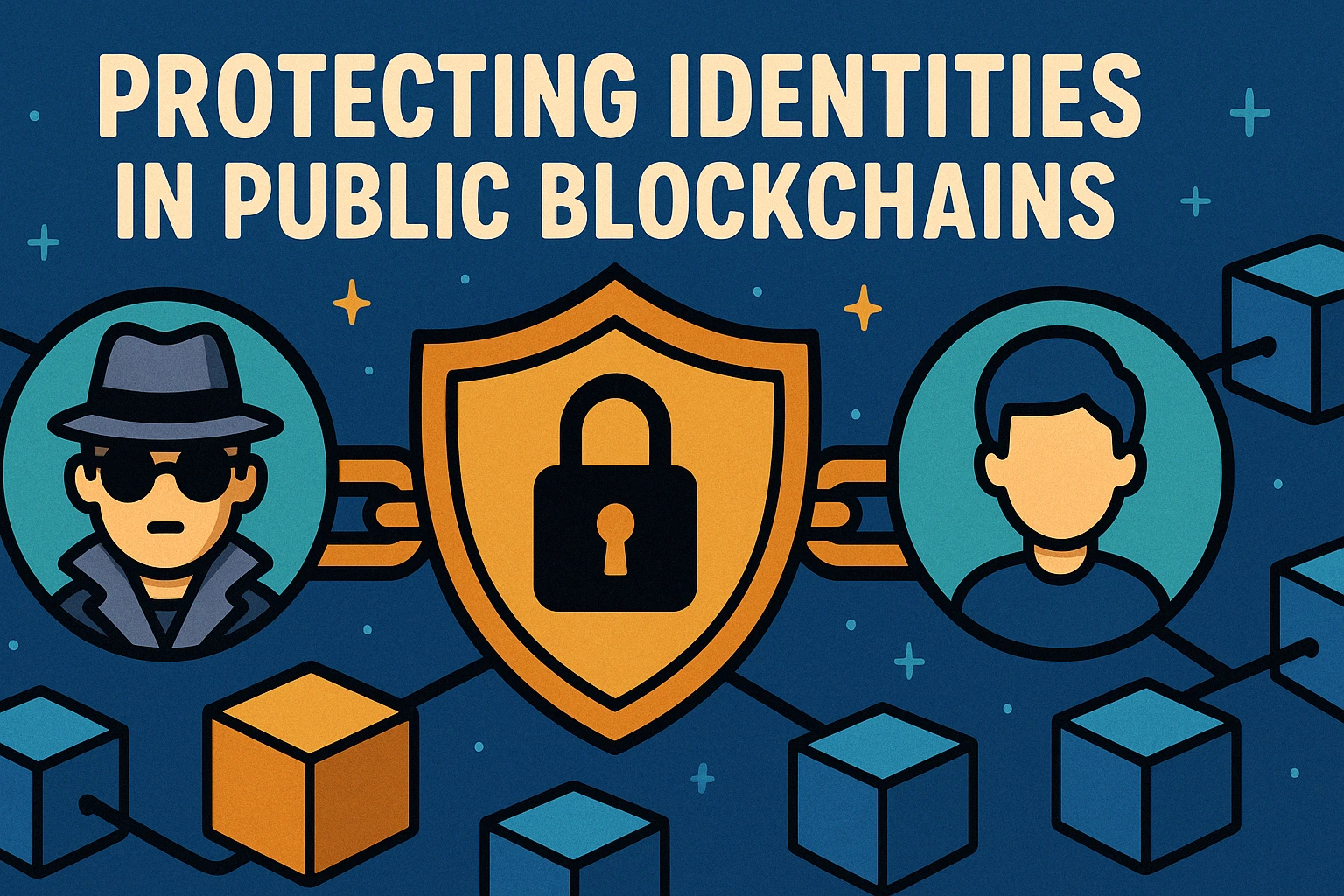After diving deep into blockchain ecosystems since 2017, one question continues to fascinate me and perplex newcomers alike: how can a completely public and transparent system simultaneously protect user privacy? This apparent contradiction sits at the heart of blockchain technology and represents one of its most elegant design features.
While conventional wisdom suggests that privacy requires secrecy, blockchains demonstrate that transparency and privacy can coexist through clever cryptographic mechanisms. In this article, I’ll unpack the various ways blockchain networks protect user identities despite operating on public ledgers that anyone can inspect.
The Fundamental Privacy Challenge
Before exploring solutions, let’s clarify the core privacy challenge of public blockchains:
- Every transaction is visible to anyone
- All blockchain data is replicated across numerous nodes
- The entire transaction history is permanently stored
- Network participants need to verify transactions
So how do we maintain privacy in such an open system? The answer lies in a combination of pseudonymity, cryptographic techniques, and privacy-enhancing protocols.
The Foundation: Pseudonymous Identity Architecture

How Addresses Shield Identity
At the most basic level, blockchain privacy begins with pseudonymity rather than anonymity. When you interact with most blockchains:
- You’re represented by cryptographic addresses rather than personal identifiers
- Your real-world identity isn’t required to generate these addresses
- Each address is derived from cryptographic key pairs, not personal information
- Users can create unlimited addresses with no central approval
Address Generation: The Technical Process
The standard process for generating a blockchain address typically follows these steps:
- Generate a private key (a large random number)
- Derive a public key from this private key using elliptic curve cryptography
- Apply a hashing algorithm to the public key
- Format the result according to the blockchain’s specific address format
This process creates a pseudo-identity that can own assets and execute transactions without revealing who controls it.
The Multi-Address Strategy
Experienced users enhance their privacy by implementing strategic address management:
| Privacy Strategy | Implementation | Privacy Level |
|---|---|---|
| Address Rotation | Creating new addresses for each transaction | Moderate |
| Wallet Segregation | Using separate wallets for different activities | Moderate-High |
| Cold Storage Separation | Keeping majority of funds in offline wallets | High |
| HD Wallet Derivation | Using hierarchical deterministic wallets to manage multiple addresses | Moderate-High |
HD wallets deserve special mention as they allow users to generate a virtually unlimited number of addresses from a single seed phrase, making address rotation practical and user-friendly.
Beyond Pseudonymity: Advanced Privacy Technologies
While pseudonymity provides baseline protection, several blockchains implement more sophisticated privacy mechanisms.
Ring Signatures: The Decoy Mechanism
Implemented by privacy coins like Monero, ring signatures allow a user to sign a transaction on behalf of a “ring” of possible signers:
- When creating a transaction, the sender’s signature is mixed with signatures from other users
- Observers can verify that one ring member signed the transaction
- But they cannot determine which specific member did so
- The larger the ring size, the stronger the privacy protection
This approach effectively “mixes” transaction origins, making it difficult to trace the actual sender.
Zero-Knowledge Proofs: Verification Without Revelation
Perhaps the most elegant privacy solution in the blockchain space, zero-knowledge proofs allow one party (the prover) to prove to another party (the verifier) that a statement is true without revealing any information beyond the validity of the statement itself.
In blockchains like Zcash that implement zk-SNARKs (Zero-Knowledge Succinct Non-Interactive Arguments of Knowledge):
- Transaction amounts are hidden
- Sender and receiver addresses are shielded
- Transaction details remain private
- Yet the network can still verify that:
- No new money was created
- The sender owned the spent funds
- The transaction follows all protocol rules
Types of Zero-Knowledge Implementations
| ZK Implementation | Privacy Features | Trade-offs | Projects Using It |
|---|---|---|---|
| zk-SNARKs | Full transaction privacy | Requires trusted setup | Zcash, Tornado Cash |
| zk-STARKs | Full privacy without trusted setup | Larger proof size | StarkNet, Mina Protocol |
| Bulletproofs | Efficient range proofs | Limited functionalities | Monero, Grin |
Confidential Transactions: Hiding Values
Pioneered by Blockstream and implemented in Liquid, Monero, and others, confidential transactions hide the amounts being transferred while still allowing verification of balance conservation.
This technique:
- Uses Pedersen commitments to obscure transaction values
- Implements range proofs to prevent overflow attacks
- Maintains public verifiability of transaction validity
- Protects against blockchain analysis based on amount correlation
Stealth Addresses: One-Time Destinations
Stealth addresses enable senders to create one-time addresses for recipients, preventing address reuse and breaking the linkability between transactions:
- The sender generates a one-time address using the recipient’s public address
- Funds are sent to this one-time address
- Only the recipient can discover and spend from this address
- Outside observers cannot connect this payment to the recipient’s public address
Privacy Coins vs. Privacy Tools: The Ecosystem Approach

The blockchain ecosystem has developed two main approaches to privacy:
Purpose-Built Privacy Blockchains
Some blockchains implement privacy at the protocol level:
- Monero (XMR): Combines ring signatures, RingCT, and stealth addresses for comprehensive privacy
- Zcash (ZEC): Uses zk-SNARKs to enable fully shielded transactions
- Grin/Beam: Implements MimbleWimble protocol for confidential transactions with compact history
- Secret Network: Enables confidential smart contracts via trusted execution environments
- Dash: Offers PrivateSend mixing service built into the protocol
Privacy Tools on Transparent Blockchains
For users of transparent blockchains like Bitcoin and Ethereum, various privacy tools exist:
Mixing Services and Protocols
- CoinJoin Implementations: Protocols like Wasabi Wallet, JoinMarket, and Whirlpool enable multiple users to combine their transactions, breaking the transaction graph
- Tornado Cash: An Ethereum mixer that uses zk-SNARKs to break the on-chain link between source and destination addresses
- Secret Network Bridges: Allow assets from transparent chains to be wrapped into privacy-preserving versions
Layer 2 Privacy Solutions
Privacy-focused Layer 2 solutions provide enhanced privacy while settling to main chains:
- Aztec Connect: zk-rollup with built-in privacy for Ethereum
- Nightfall: Ernst & Young’s privacy-focused optimistic rollup
- zkSync: zk-rollup with potential for private transactions
The Reality of Blockchain Privacy: Strengths and Limitations

The On-Ramp/Off-Ramp Problem
The most significant privacy vulnerability in blockchain systems often isn’t the blockchain itself but rather the points where digital assets connect with traditional finance:
- KYC Requirements: Most fiat on-ramps require identity verification
- Exchange Monitoring: Centralized exchanges track deposit and withdrawal addresses
- Chain Analysis: Companies specialize in tracking funds across blockchains
- Cross-Chain Tracking: Privacy can be compromised when moving between chains
Blockchain Analysis: Following the Money
Professional blockchain analysis firms have developed sophisticated techniques to deanonymize users:
- Clustering: Identifying addresses likely belonging to the same entity
- Taint Analysis: Tracking the flow of specific coins through the system
- Timing Analysis: Correlating transaction times with external events
- Amount Correlation: Matching unique transaction amounts across systems
- Network Analysis: Monitoring connections to blockchain nodes
Metadata Leakage
Even with strong cryptographic protections, users may leak identifying information through:
- IP addresses when broadcasting transactions
- Transaction timing patterns
- Consistent transaction sizes
- Cross-chain activity patterns
- Smart contract interactions
Best Practices for Privacy-Conscious Blockchain Users

Based on years in the blockchain space, here are the most effective privacy practices:
Basic Privacy Hygiene
- Address Rotation: Never reuse addresses for receiving funds
- Transaction Batching: Avoid predictable transaction patterns
- Network Privacy: Use VPNs or Tor when connecting to blockchain networks
- Cold Storage: Keep most funds in cold storage with minimal transaction history
- Privacy-Preserving Wallets: Use wallets with built-in CoinJoin or similar features
Advanced Privacy Techniques
For users requiring stronger privacy protections:
- Cross-Chain Privacy: Use atomic swaps between different privacy coins
- Privacy-Focused Smart Contract Platforms: For DeFi activities requiring confidentiality
- Decentralized Identity Solutions: Leverage blockchain-based DIDs that reveal minimal information
- Mixing Before Critical Transactions: Use mixing services before transactions that require privacy
- Airgapped Transaction Signing: Sign transactions on offline devices to prevent metadata leakage
The Future of Blockchain Privacy

As blockchain technology evolves, we’re seeing promising developments that could enhance privacy:
Emerging Privacy Technologies
- Fully Homomorphic Encryption (FHE): Performing computations on encrypted data without decrypting it
- Multi-Party Computation (MPC): Distributed computation that preserves input privacy
- Indistinguishability Obfuscation: Creating “encrypted” yet functional programs
- Post-Quantum Privacy: Privacy techniques resistant to quantum computing attacks
Regulatory Challenges and Privacy Solutions
The privacy landscape is also shaped by evolving regulations:
- Travel Rule Compliance: Privacy tools that still enable regulatory compliance
- Selective Disclosure: Proving compliance without revealing all information
- Privacy-Preserving Analytics: Allowing aggregate analysis while protecting individual privacy
- Auditable Privacy: Enabling optional transparency for regulatory purposes
FAQs About Blockchain Privacy
Does using a blockchain automatically mean my transactions are private?
No. Most popular blockchains like Bitcoin and Ethereum are pseudonymous, not anonymous. While your real-world identity isn’t directly connected to your blockchain address, transaction patterns and on/off-ramp activities can potentially link your identity to your addresses.
Are privacy coins completely untraceable?
While privacy coins implement strong protections, no system offers perfect untraceability. Different privacy coins offer different privacy guarantees, and user behavior can still compromise privacy. Additionally, advances in chain analysis continually challenge privacy technologies.
Can government agencies track blockchain transactions?
Yes, especially on transparent blockchains. Government agencies often work with blockchain analysis companies and have successfully traced transactions even on certain privacy-focused chains. The level of resources required increases dramatically with properly implemented privacy technologies.
Do I need technical knowledge to maintain privacy on blockchains?
Basic privacy practices like address rotation can be implemented with user-friendly wallets. However, achieving strong privacy often requires understanding the underlying technologies and their limitations.
How do privacy solutions affect blockchain scalability?
Most privacy technologies add computational overhead or increase data storage requirements, potentially affecting scalability. Engineers are continuously working on optimizations to reduce these trade-offs.
Is it legal to use privacy-enhancing blockchain technologies?
In most jurisdictions, using privacy technologies is legal, similar to using encrypted messaging or private browsing. However, regulations vary by country, and some regions have restrictions on specific privacy tools like mixers.
Conclusion: The Privacy Balancing Act
Blockchain technology demonstrates that privacy and transparency aren’t mutually exclusive. Through clever cryptographic techniques and privacy-enhancing protocols, users can maintain reasonable privacy despite operating on public ledgers.
However, perfect privacy remains elusive, and users must balance their privacy requirements against convenience, functionality, and regulatory considerations. As the technology evolves, we can expect continued innovation in blockchain privacy solutions, providing users with stronger protections while maintaining the benefits of decentralized, trustless systems.
The most important takeaway is that blockchain privacy isn’t binary—it exists on a spectrum. Users must make informed choices about which privacy tools and practices best align with their specific needs and risk profiles. By understanding the available privacy mechanisms and their limitations, blockchain users can navigate this public ecosystem while maintaining appropriate levels of privacy.
